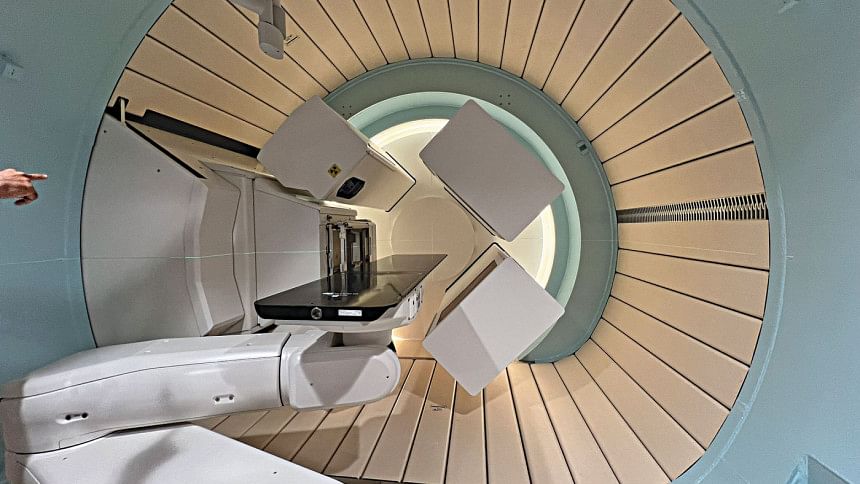Proton Beam Therapy

Cancer treatment has evolved significantly over the past few decades, and Singapore General Hospital (SGH) stands at the forefront of this revolution with its novel proton beam therapy facilities.
Proton beam therapy represents a significant advancement in the field of oncology. Unlike traditional radiation therapy, which uses X-rays to destroy cancer cells, proton beam therapy employs protons—positively charged particles. The key advantage of protons is their ability to deliver a high dose of radiation directly to the tumor while minimising damage to surrounding healthy tissues. This precision reduces side effects and improves the quality of life for patients.
Dr Michael Wang, Chairman, Division of Radiation Oncology, National Caner Centre Singapore, provided a comprehensive overview of the technology. "Proton beam therapy allows us to target tumours with sub-millimeter accuracy," Dr Wang explained. "This is particularly beneficial for treating tumors located near critical structures, such as the brain, spine, and eyes."
The facility itself is a marvel of modern engineering. The heart of the system is a cyclotron—a particle accelerator that generates protons and directs them toward the patient's tumour. The beam is meticulously controlled using advanced imaging and computer systems to ensure precise delivery.
During my tour, I observed a session where a young boy named Paul (name disguised to protect identity) was receiving treatment for a brain tumour. His parents, visibly relieved by the advanced care, shared their experience. "When we first learned about Paul's diagnosis, we were devastated," his mother recounted. "But the doctors here gave us hope. Proton therapy has been a game-changer for us."
Paul lay still on a treatment table, surrounded by state-of-the-art equipment. The room was calm and quiet, a stark contrast to the anxiety often associated with cancer treatment. The proton beam moved silently, guided by the expertise of the medical team. In just a few minutes, the session was over—another step in Paul's journey toward recovery.
SGH's commitment to patient care goes beyond the technical aspects. Prof Tan Hiang Khoon, Deputy CEO, SGH, highlighted the hospital's holistic approach. "We focus not only on the physical treatment but also on the emotional and psychological well-being of our patients. Our multidisciplinary team includes oncologists, radiologists, nurses, and counselors who work together to provide comprehensive care."
The implementation of proton beam therapy at SGH is part of a broader strategy to enhance cancer treatment in Singapore. The hospital collaborates with international institutions to stay abreast of the latest advancements and continuously improve its protocols. This global perspective ensures that patients receive the best possible care based on the latest scientific evidence.
However, proton beam therapy is not without its challenges. The technology is expensive, and the treatment facility requires significant investment. Dr Wang acknowledged these hurdles but emphasised the long-term benefits. "The initial costs are high, but the potential to improve patient outcomes and reduce long-term healthcare costs makes it a worthwhile investment."
SGH's dedication to innovation and patient care is a beacon of hope for countless individuals and families affected by cancer. Proton beam therapy is not just a technological advancement; it represents a new era of precision and compassion in oncology.
In a world where cancer remains one of the most formidable health challenges, facilities like SGH's Proton Therapy Center offer a glimpse of a brighter future. With continued research and collaboration, the promise of more effective and less invasive cancer treatments is becoming a reality, one proton at a time.

 For all latest news, follow The Daily Star's Google News channel.
For all latest news, follow The Daily Star's Google News channel. 







Comments